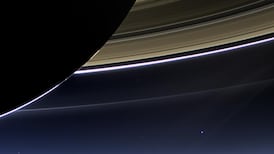One of the most eagerly awaited astronomical events of the year – which promised one or two meteors or “shooting stars” a minute – is set to continue in Irish skies on Wednesday night.
Tuesday night saw about 60 meteors an hour darting across the sky and stargazers can expect about half that amount on Wednesday night.
“The Perseids will be half as strong tonight as they were last night, so that’s still 10 times more meteors tonight than a normal night, so well worth viewing,” said David Moore from astronomy.ie.
“The best time to view is dusk until dawn,” he said.
RM Block
“We had people sending us counts of how many they saw every 15 minutes from 10:30pm last night when it got dark enough to see them. I saw some after 4am when dawn was breaking.”

“Dublin gets much the same view as the rest of the country, indeed, all of Europe,” Mr Moore said.
“This year the moon is in the sky so even those in the countryside will have moonlit skies so even suburban viewers will get the same view.”
Met Éireann has forecast a humid night with clear spells on Wednesday, however a few showers are possible which could be heavy or thundery.
Mr Moore advised stargazers to ensure they are comfortable while looking up.
“Standing with your neck craned back for hours is not comfortable.
“Look anywhere in the sky. If there are clouds look in the clear patches. If totally clear stand with your back to the moon so it does not dazzle you,” he said.
“The paths of the meteors will all point back to the constellation Perseus but you do not have to look at Perseus.”
The Perseid meteors are caused by dust particles shed by the comet Swift-Tuttle. The comet, which takes 133 years to orbit the sun, was last seen in Irish skies in 1992.
At this time of year, Earth moves through this debris cloud, making one of the most celebrated astronomical events and arguably the most predictable.
Particles from the debris cloud subsequently burn up on entering Earth’s atmosphere and create flashes of light.
The shower is active for several weeks.
“It’s such a special time of the year,” said astronomer Danielle Wilcox from Blackrock Castle Observatory, Cork.

“It’s a really good meteor shower in particular because it gives us a lot of meteors per hour compared to other meteor showers,” she said.
“That’s what’s so exciting about it, especially for people who have never seen ‘shooting stars’, this is your chance to get out there and see that,” she said.
“Take some time to look up,” she said.


















